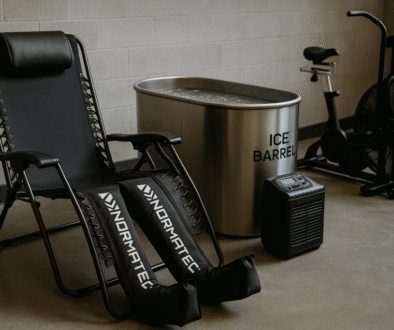Hypertrophy Training Demystified: Science-Backed Strategies for Maximum Muscle Growth
Why Your Muscle Growth Stalled (And How to Fix It)
Welcome to the ultimate hypertrophy training guide. You’ve been hitting the gym consistently, yet your gains have plateaued. Sound familiar? You’re not alone—over 67% of lifters experience stalled muscle growth within six months of starting training. The culprit? Misunderstanding hypertrophy training fundamentals. Unlike strength or power development, hypertrophy (muscle growth) thrives under specific but flexible conditions. Dr. Andy Galpin, a muscle physiology expert, calls it “idiot-proof programming”—if you grasp the core principles. By the end of this hypertrophy training guide, you’ll know exactly how to structure workouts, fuel recovery, and avoid common pitfalls sabotaging your results.
What Is Hypertrophy Training? (Part of Your Hypertrophy Training Guide)
Hypertrophy training guide essentials focus on muscle size expansion through mechanical tension, metabolic stress, and muscle damage. Unlike pure strength training (1–5 reps) or power training (explosive movements), hypertrophy prioritizes:
-
Moderate rep ranges (6–30 reps per set)
-
Proximity to failure (1–3 reps shy of complete fatigue)
-
Cumulative weekly volume (10–25 sets per muscle group)
Crucially, it’s adaptable. As Dr. Galpin notes:
“You can achieve hypertrophy through heavy low-rep sets, high-rep metabolic work, or anything in between—as long as one key variable (load, frequency, or volume) is maximized.”
Interested in how hypertrophy stacks up against strength work? Check out our Strength vs. Hypertrophy: Which Is Best? for more in this guide.
The Science of Muscle Growth in This Hypertrophy Training Guide
Hypertrophy training guide science: muscle fibers adapt to stress by increasing protein synthesis. Three pathways trigger this:
1. Mechanical Tension in Hypertrophy Training Guide
Lifting heavy weights (70–85% 1RM) for 4–8 reps stretches muscle cells, activating mTOR pathways that stimulate growth. Research shows this is optimal for myofibrillar hypertrophy (contractile tissue).
2. Metabolic Stress for Muscle Growth Guide
High-rep sets (15–30 reps) with short rest periods (30–90 s) cause metabolite buildup (lactate, hydrogen ions). This swells muscles (“the pump”) and upregulates growth factors like IGF-1.
3. Muscle Damage: A Key Guide Component
Eccentric-focused movements (e.g., slow lowers) create micro-tears. While some damage aids growth, Dr. Galpin clarifies:
“Total muscle breakdown isn’t required—this is a pervasive myth.”
💡 Key Insight: A 2019 meta-analysis confirmed all three pathways increase muscle size equally when volume is matched (Schoenfeld et al. 2019).
6 Actionable Protocols in Your Hypertrophy Training Guide
1. Optimize Weekly Volume (hypertrophy training guide tip)
-
Beginners: 10 sets/muscle/week
-
Intermediate/Advanced: 15–25 sets/muscle/week
Example Split:
-
Chest: 4 sets bench press (Mon) + 4 sets incline dumbbell press (Thu) + 3 sets flyes (Sat)
-
Pro Tip: Count only exercises where the muscle is a primary mover. Chin-ups count for biceps; pull-ups do not.
2. Master Rep Ranges (Advanced hypertrophy training guide tips)
-
Strength-Hypertrophy Blend: 5–8 reps
-
Pure Hypertrophy: 8–15 reps
-
Metabolic Focus: 15–30 reps (use for isolation moves like lateral raises)
Never train below 4 or above 30 reps for hypertrophy training guide goals.
3. Frequency & Splits Made Simple in Your Guide
-
3×/week Full-Body: Best for busy lifters; ensures no muscle misses stimulation if a workout is skipped.
-
4×/week Upper/Lower: Allows higher volume per session.
-
Avoid “bro splits” (1 muscle/week)—unless you can hammer 20+ sets in one session.
4. Strategic Exercise Order: Guide Insight
-
Prefatigue Technique: Isolate weak muscles first (e.g., biceps curls before rows to force back engagement).
-
Compound-First Standard: Squats before leg extensions for efficiency.
5. Nutrition for Growth (hypertrophy training guide nutrition)
-
Protein: 1.6–2.4 g/kg bodyweight daily. Spread doses every 3–4 hours.
-
Post-Workout: 35 g protein + 35 g carbs (1:1 ratio) within 2 hours.
🥩 Best Sources: Whey, eggs, chicken, lentils. Plant-based proteins work if intake is sufficient.
6. Supplements That Matter (guide supplement tips)
-
Creatine Monohydrate: 3–5 g/day. Boasts 20+ studies confirming its benefits for size and strength.
-
Avoid “muscle-building” blends—stick to evidence-backed singles.
Case Study: From Plateau to Peak (Guide Example)
Client: 28-year-old male, 2 years training experience
-
Initial Volume: 8 sets/chest per week
-
Tweaks Made: Increased to 18 sets/week, shifted to 4–8 rep bench press + 12–15 rep cable flyes, added protein timing strategy.
-
Outcome: +1.5 cm chest circumference in 8 weeks; 6 kg lean mass gained in 12 weeks.
Hypertrophy Mistakes Killing Your Gains (Guide Warnings)
-
❌ Cold Exposure Post-Workout: Icing muscles blunts protein synthesis. Save it for rest days.
-
❌ Neglecting Rear Delts & Neck: “Balanced development prevents injury and improves posture,” says Galpin. Add face pulls and band pull-aparts.
-
❌ Overtraining to Failure: Going all-out every set causes systemic fatigue. Use “RIR 2” (2 reps in reserve) for 80% of sets.
-
❌ Ignoring Recovery Metrics:
-
Soreness >6/10? Skip training.
-
Sleep <7 hours? Growth stalls. Prioritize rest.
-
FAQs: Hypertrophy Training Guide Essentials
Q: Can I build muscle with bodyweight exercises?
A: Absolutely. Hypertrophy training guide principles apply—use bodyweight if exercises reach near-failure with tempo variations or resistance bands.
Q: How long does protein synthesis stay elevated post-workout?
A: Up to 48 hours, peaking at 12–24 hours. Train each muscle 2–3×/week for sustained growth.
Q: Do I need steroids to get big?
A: No. Natural hypertrophy is achievable with proper programming, nutrition, and consistency.
Q: Why aren’t my arms growing?
A: Likely insufficient volume (aim for 12+ weekly sets) or poor mind-muscle connection. Prefatigue biceps before compound pulls.
Ready to Grow? (Your Hypertrophy Training Guide)
Hypertrophy training guide thrives on consistency, not complexity. By mastering volume (15–20 sets/muscle weekly), eating enough protein, and recovering strategically, you’ll unlock steady growth.
-
Dive deeper into Nutrition for Muscle Growth



October 14, 2025 @ 5:22 PM
I’d have to examine with you here. Which is not one thing I usually do! I take pleasure in reading a post that may make folks think. Additionally, thanks for permitting me to comment!
October 27, 2025 @ 8:37 AM
you are really a excellent webmaster. Thhe web siite loading velocity
iss incredible. It sort of feels that yyou are doing any
unique trick. Furthermore, The contents are masterpiece.
you’ve performed a great process on this topic! https://meds24.sbs/